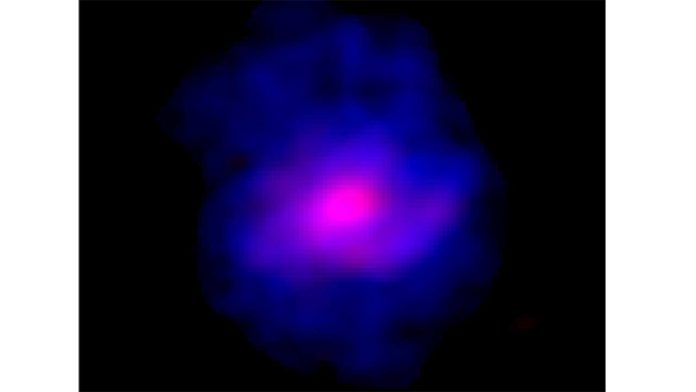Galaxy formation in the early Universe is thought to have been a chaotic process, producing disturbed and asymmetric galaxy morphologies.
Recently, scientists challenged our understanding of galaxy formation. They did this by unveiling pictures of a young galaxy in the early life of the Universe, which appears surprisingly mature.
Named as ALESS 073.1, the galaxy has all the features expected of a much more mature galaxy. How it grew so fast remains a puzzle to scientists.
Using the Atacama Large Millimeter/submillimeter Array (ALMA) telescope, scientists from Cardiff University explored the remote past. They revealed how ALESS 073.1 looked just 1.2 billion years after the Big Bang.
The light emitted from the galaxy takes billions of years to reach our telescopes on Earth. Because of light, scientists were able to explore how the galaxy looked during its infancy and determined how it was initially formed.
The result was one of the sharpest, direct images of a primordial galaxy ever produced, which allowed the team to undertake a detailed study of its internal structure.
The lead author of the study Dr. Federico Lelli, who undertook the work at Cardiff University’s School of Physics and Astronomy, said, “We discovered that a massive bulge, a regular rotating disk, and possibly spiral arms were already in place in this galaxy when the Universe was just 10% of its current age.”
Co-author of the study Dr. Timothy Davis, from the School of Physics and Astronomy, said: “This spectacular discovery challenges our current understanding of how galaxies form because we believed these features only arose in “mature” galaxies, not in young ones.”
However, the kinematic properties of ALESS 073.1 have revealed that the formation of massive bulges can occur swift – around half of the stars in the galaxy were shown to be in a bulge.
Similarly, some mature galaxies, like our own Milky Way, have been known to have spiral arms extending from their central parts, giving them a distinctive spiral shape.
Similar features were also unexpectedly spotted in ALESS 073.1, much to the team’s amazement. Early galaxies are generally thought to be chaotic and turbulent rather than having regular, well-organized structures like spiral arms.
Journal Reference:
- Federico Lelli et al. A massive stellar bulge in a regularly rotating galaxy 1.2 billion years after the Big Bang. DOI: 10.1126/science.abc1893
